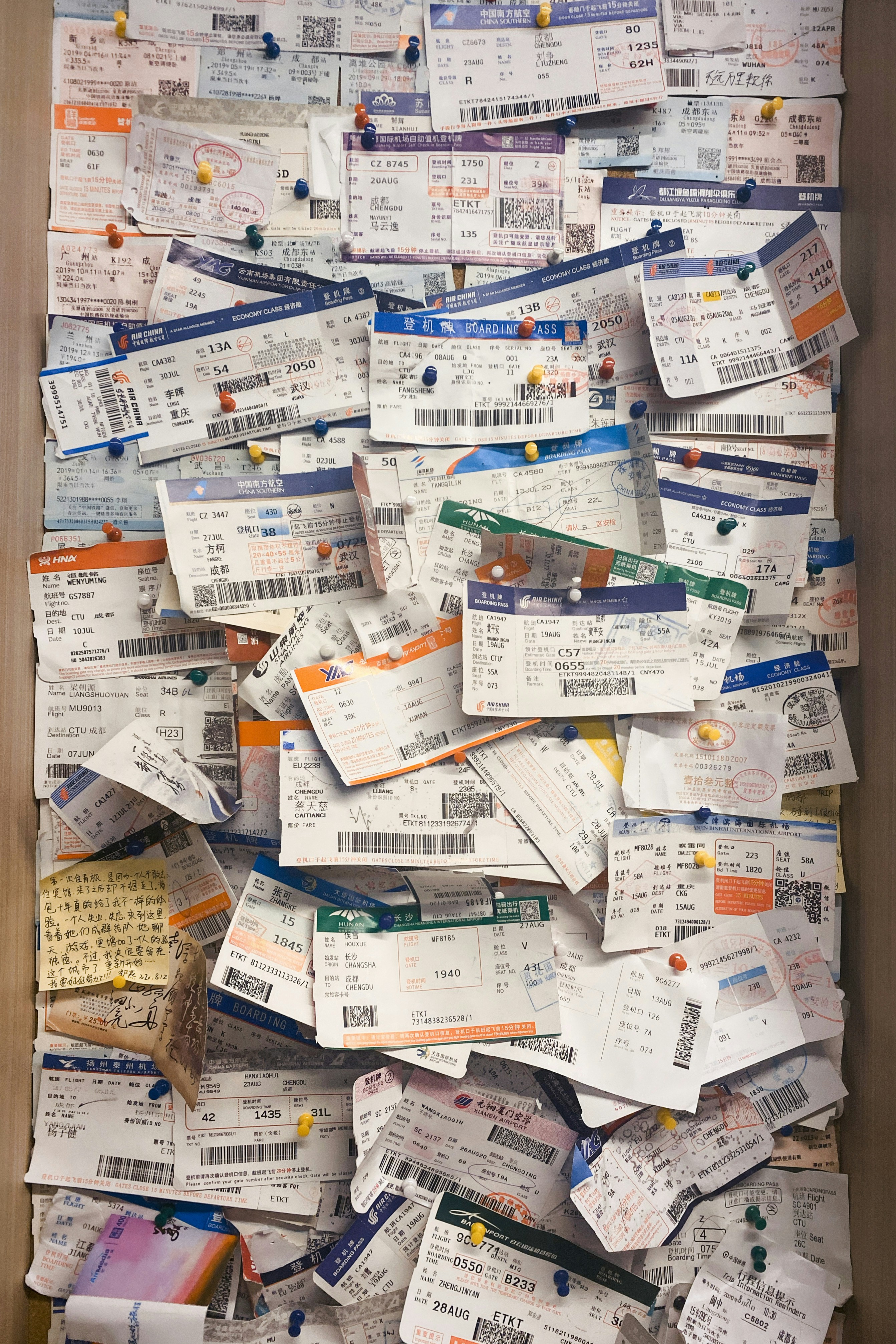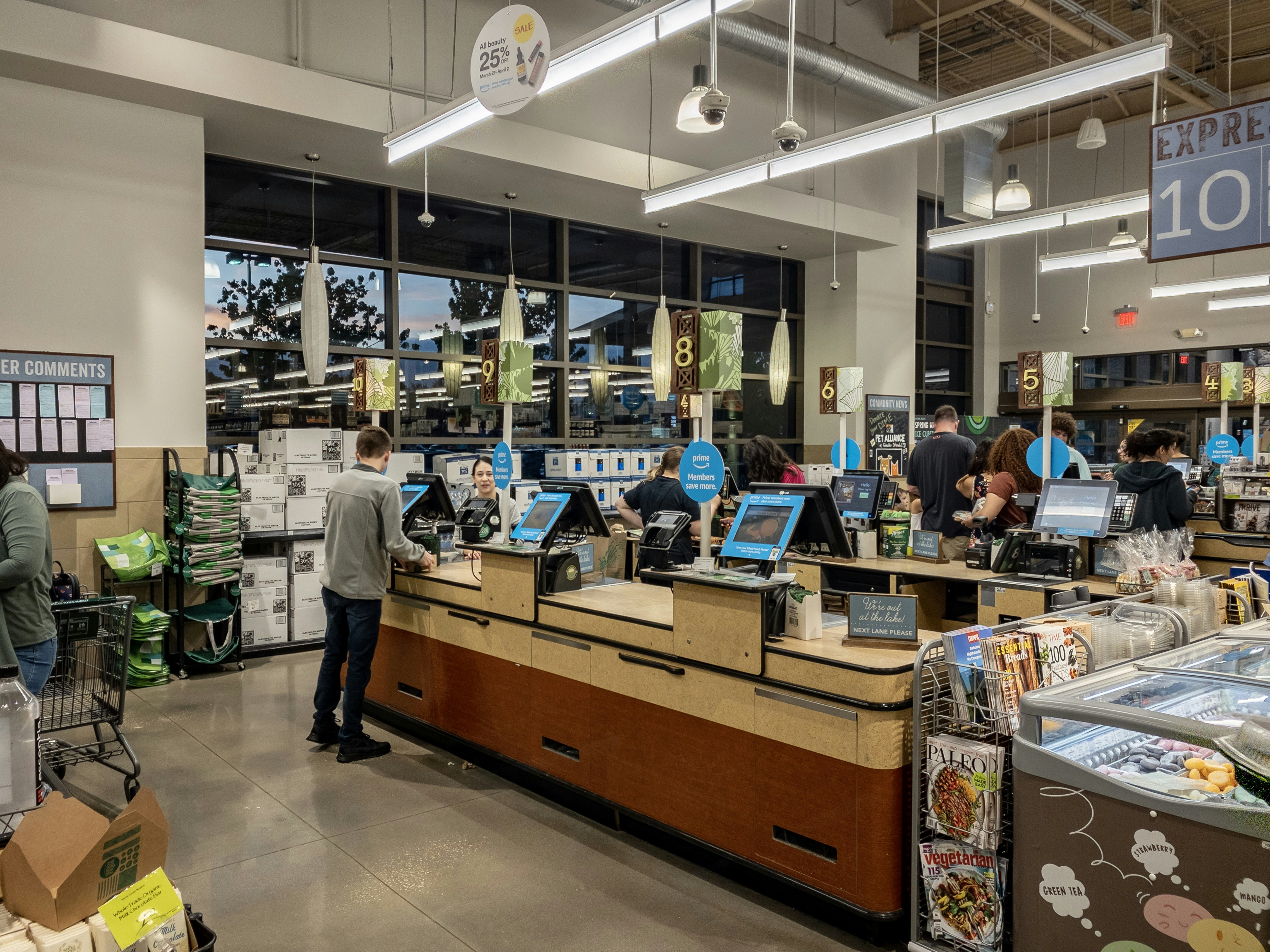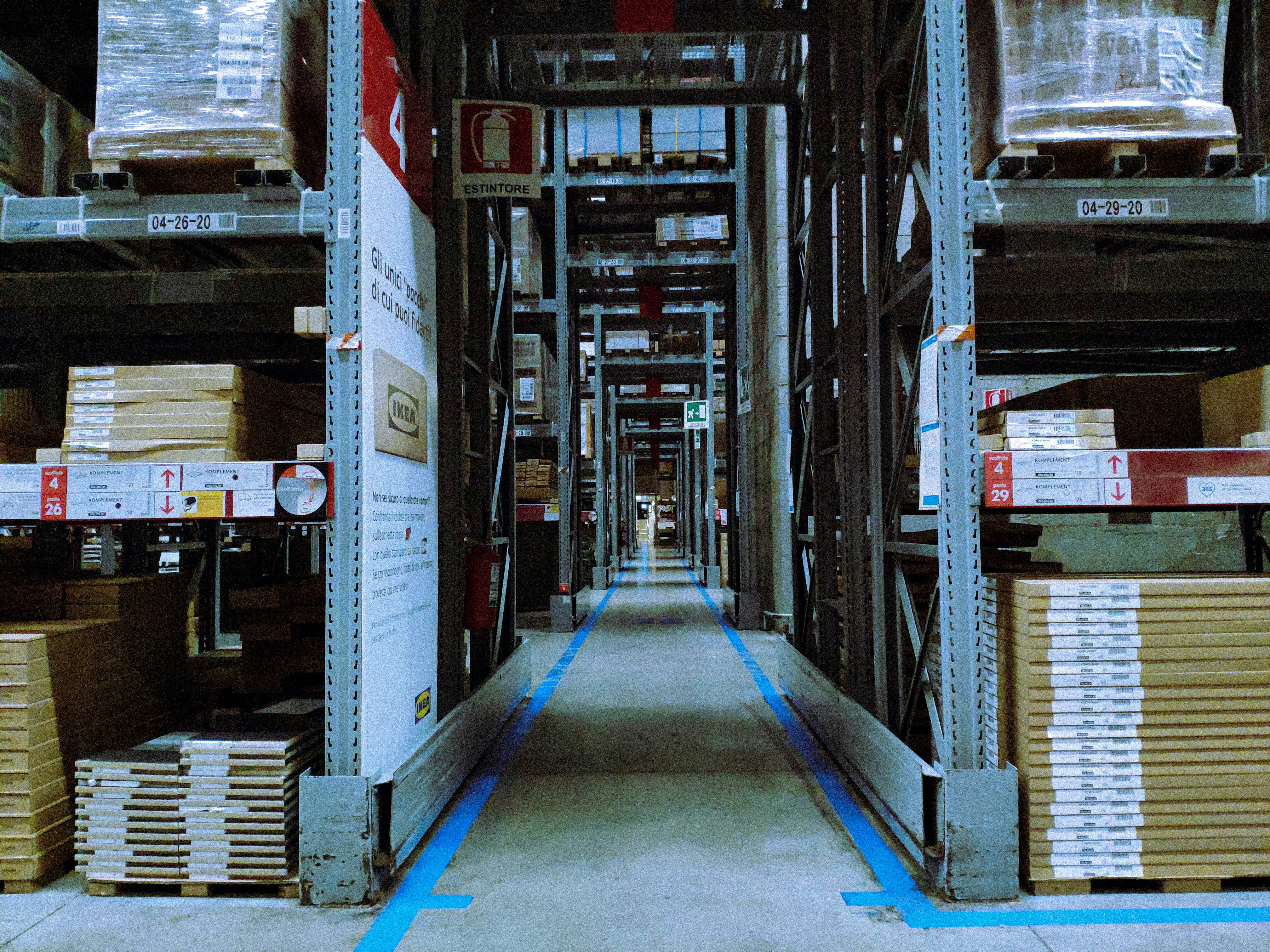Introduction to Barcodes in Airline Boarding Passes
Barcodes have become an integral component of modern air travel, serving as a method for encoding essential information on airline boarding passes. Essentially, a barcode is a graphical representation of data that can be read by scanners, providing a quick and efficient means of retrieving information. In the context of airline boarding passes, barcodes contain vital details such as the passenger’s name, flight number, and departure time, making them crucial for the boarding process.
The implementation of barcodes in airline boarding passes has revolutionized the efficiency with which airlines operate. By digitizing information, barcodes reduce the reliance on paper tickets and manual checks, significantly streamlining the boarding process. Passengers can quickly scan their boarding passes at various checkpoints, facilitating a smoother transition from check-in to boarding. This not only saves time but also minimizes the potential for human error associated with manual data entry and verification.
Furthermore, the introduction of barcodes has led to a marked improvement in the overall customer experience. With the option to check in online and receive a digital boarding pass, travelers face fewer hassles at the airport. Additionally, barcodes can be scanned using mobile devices, allowing passengers to store their boarding passes conveniently. This technological adaptation meets the increasing demand for efficiency and flexibility in travel, enhancing convenience for customers.
As the airline industry continues to evolve, understanding the role of barcodes in airline boarding passes becomes increasingly important. In the following sections, we will explore the various types of barcodes used in this context, as well as the specific functionalities they serve within the airline boarding process, detailing their profound impact on modern air travel.
Types of Barcodes Used in Airline Boarding Passes
In the realm of airline boarding passes, several types of barcodes are utilized, each serving a distinct purpose and characterized by unique features. The most prevalent types include QR codes and PDF417 barcodes, along with other variations that cater to specific operational requirements.
QR codes are ubiquitous in various industries, including aviation, owing to their capacity to store a considerable amount of information in a compact space. These two-dimensional barcodes consist of black squares arranged on a white grid and can be scanned easily using smartphones and point-of-sale devices. Airlines opt for QR codes for boarding passes because they facilitate quick and efficient data retrieval, allowing for expedited boarding processes and improved customer experiences.
Another prominent type of barcode found on airline boarding passes is the PDF417 barcode. This is a stacked linear barcode format that can encode significantly larger amounts of data such as passenger details, flight information, and even baggage tracking information. Airlines often choose PDF417 barcodes due to their robustness and reliability, which are particularly advantageous in high-volume environments like airports. The integration of PDF417 in boarding passes allows for comprehensive data storage while maintaining legibility and scan-ability across various scanning equipment.
Alongside these common types, some airlines might employ code 128 or other standard linear barcodes that, while less data-rich, are still effective for representing key information succinctly. The choice of barcode often depends on the airline’s operational needs, technological capabilities, and the degree of information that needs to be communicated at check-in and boarding.
Understanding these barcode types and their functionalities is crucial for both airline operators and travelers, as they play a vital role in streamlining the boarding process and enhancing overall efficiency in air travel.
How Barcodes Function in the Check-In Process
Barcodes play a pivotal role in modern air travel, particularly during the check-in process. When a passenger checks in for a flight, either through an airline’s website, a mobile app, or a self-service kiosk at the airport, a unique barcode is generated. This barcode encodes essential information, including flight details, passenger identification, and seat assignments. The technology harnessed for this process is a combination of computerized systems and scanning devices that work seamlessly together to facilitate a smooth boarding experience.
Upon check-in, the passenger’s information is input into the airline’s database, which generates the barcode. Typically, this involves encoding the data in a specific format, such as PDF417 or QR code, which is distinctive to the airline. This barcode is then printed on a boarding pass or sent to the passenger’s mobile device. The inclusion of a digital barcode enhances convenience, as passengers can use their smartphones instead of needing a printed document.
At the airport, when passengers approach the security checkpoint or boarding gate, staff utilize handheld barcode scanners to read the information contained within the barcode. These scanners convert the visual patterns of the barcode back into digital data, allowing airport personnel to access the passenger’s travel details quickly. The system verifies the information against the airline’s database, ensuring that passengers are boarding the correct flight based on their ticketing information.
This barcode system dramatically streamlines the check-in process, reducing wait times and increasing overall efficiency. The reliance on barcodes not only simplifies the verification of a passenger’s identity and flight status but also integrates with various other operational systems at the airport, such as baggage handling and security protocols. Understanding how barcodes function in the check-in process illuminates their vital role in contemporary air travel infrastructure.
Benefits of Using Barcodes for Airlines
The implementation of barcodes on airline boarding passes brings several significant advantages that enhance operational efficiency. One of the most immediate benefits is the increased speed of passenger boarding. With the use of barcode scanners, boarding processes can be streamlined, allowing airlines to quickly verify passenger identity and ticket validity. This efficiency not only reduces the time spent at the boarding gate but also minimizes delays in flight schedules, ultimately leading to improved customer satisfaction.
Moreover, the incorporation of barcodes significantly reduces human error. Manual boarding processes are susceptible to mistakes, such as misidentifying passengers or failing to account for missing documents. With barcode technology, the possibility of such errors is substantially minimized, as scanners provide instant verification of passengers and their corresponding flights. This accuracy translates into higher levels of safety and security, which are paramount in airline operations.
Another critical aspect is the enhancement of baggage handling. Airlines can utilize barcodes to track luggage accurately throughout its journey, greatly improving the chances of ensuring that bags reach their intended destinations. When combined with automated systems, barcodes enable immediate updates on the status of baggage, allowing for better communication with passengers regarding their belongings. This efficient tracking reduces the incidence of lost or delayed luggage, which is often a source of customer dissatisfaction.
Transitioning from traditional paper-based systems to digital barcode systems also presents notable cost savings for airlines. By decreasing the reliance on physical boarding passes, airlines can effectively lower printing costs and reduce the environmental impact associated with paper waste. Additionally, these systems can lead to greater resource allocation efficiency, which can ultimately improve profitability.
In conclusion, the adoption of barcodes on boarding passes serves to enhance the speed and accuracy of airline operations, reduce human error, improve baggage management, and offer significant cost savings. These benefits collectively contribute to a more effective and customer-oriented airline experience.
Passenger Experience and Barcodes
The integration of barcodes in airline boarding passes has significantly transformed the travel experience for passengers. With the advent of mobile boarding passes, travelers now enjoy a level of convenience that was previously unavailable. Mobile boarding passes, which generate a unique barcode for each traveler, can be accessed directly through smartphones. This eliminates the need for physical paper tickets, allowing passengers to check in, gain entry to the terminal, and board their flights with ease.
Scanning barcodes at various checkpoints, such as security and boarding gates, enhances the overall efficiency of airport processes. Passengers simply present their mobile boarding passes to airline staff or scanning machines, which swiftly read the information encoded in the barcode. This streamlined method reduces queue times, as the time spent during check-ins and boardings is significantly shortened. Furthermore, the use of barcodes minimizes the likelihood of errors associated with manual ticket handling, thereby fostering a smoother travel experience.
In conclusion, barcodes play an essential role in enhancing the passenger experience during air travel. The convenience brought by mobile boarding passes, along with the streamlined scanning processes at various checkpoints, contributes to increased customer satisfaction and a more enjoyable travel journey.
Security Considerations with Barcodes
Barcodes play a vital role in modern airline boarding passes, offering a seamless process for passenger identification and ticket validation. However, their use also presents several security vulnerabilities that demand significant attention. One of the foremost concerns is the potential for forgery. Unscrupulous individuals may attempt to create counterfeit boarding passes by replicating barcodes, thus gaining unauthorized access to flights. Such actions not only compromise the integrity of airline systems but also pose risks to passenger safety.
In addition to forgery, information theft is another pressing threat associated with barcodes on boarding passes. Barcodes can contain sensitive data, including flight details and passenger information. If these barcodes are intercepted or scanned by malicious actors, they could exploit this data for identity theft or other nefarious purposes. As a result, it is imperative for airlines to employ robust security measures to protect against these risks.
To counteract these vulnerabilities, airlines have begun integrating various security solutions. One of the most effective methods is encryption, where the information encoded in the barcode is transformed into a secure format that is difficult for unauthorized parties to access or decipher. Additionally, many airlines implement authentication measures that require verification, ensuring that the boarding pass is legitimate before allowing passengers to board. Technology also plays a crucial role in enhancing security; for instance, advanced scanning devices are capable of detecting inconsistencies in the barcode data that could signal fraud.
Ensuring passenger safety while utilizing barcodes in airline boarding passes is an ongoing priority for airlines worldwide. By addressing the threats posed by forgery and information theft through encryption, authentication, and advanced technology, the airline industry continues to enhance the security framework necessary for safe travel.
The Future of Barcodes in Air Travel
As the aviation industry continues to evolve, the role of barcodes in airline boarding passes is poised for significant transformation. With the rise of mobile technology and the integration of biometrics, passengers can anticipate a more streamlined and efficient travel experience. Emerging trends suggest that in the near future, barcodes will not merely serve as static data points but will become dynamic elements that significantly enhance user interaction.
One of the most promising advancements lies in the proliferation of mobile boarding passes. As smartphones become increasingly ubiquitous, airlines are enhancing the functionality of barcodes by enabling passengers to store their boarding passes digitally. This not only facilitates a smoother check-in process but also minimizes physical contact, addressing modern health concerns. The implementation of QR codes, which can store more information and are easily scanned by mobile devices, is likely to become standard practice, thereby elevating the entire boarding experience.
Furthermore, the incorporation of biometric technology offers a glimpse into the future of airport security and boarding procedures. Biometric systems, such as facial recognition, allow for quick and efficient identification, potentially reducing the need for traditional boarding passes altogether. In such scenarios, barcodes may evolve into a mere support mechanism, providing a checklist for security personnel while seamlessly integrating with advanced biometric scans. This shift could result in faster boarding times and enhanced convenience for travelers.
Moreover, the ability to personalize passenger experiences through data-driven algorithms is becoming increasingly feasible. Future barcodes may incorporate personalized travel information or special offers, enhancing customer satisfaction and loyalty. As innovations continue to unfold, it is crucial for stakeholders in the aviation sector to adapt accordingly, ensuring a cohesive, secure, and user-friendly travel experience driven by the smart integration of technology and barcodes.
Case Studies: Airlines Leading the Way
In recent years, several airlines have successfully integrated barcode technology into their boarding processes, resulting in enhanced efficiency and improved customer service. One notable example is Delta Air Lines, which has adopted the use of dynamic barcodes on mobile boarding passes. This innovation allows for real-time updates, giving passengers flexibility, especially when their travel circumstances change. Delta’s implementation of this technology has led to an increase in the speed of boarding, reducing turnaround times and minimizing gate congestion.
Another airline demonstrating effective use of barcodes is Lufthansa. The carrier has implemented a unique boarding system utilizing both QR codes and traditional barcodes on its boarding passes. By enabling passengers to scan their boarding passes at self-service kiosks, Lufthansa has significantly streamlined the check-in process. This initiative has not only improved the passenger experience but has also provided the airline with valuable data regarding usage patterns, contributing to better resource allocation and operational efficiency.
Furthermore, Southwest Airlines has embraced barcode technology through its innovative use of mobile applications. By allowing passengers to access electronic boarding passes that include barcodes, Southwest has reduced paper waste and simplified the boarding process. Surveys conducted post-implementation indicated a marked improvement in passenger satisfaction ratings, showcasing the benefits of incorporating technology to elevate the overall travel experience.
These case studies highlight the diverse applications of barcode technology in the airline industry. By embracing such solutions, airlines have demonstrated a commitment to enhancing operational efficiency while simultaneously improving the customer experience. As technology continues to evolve, the aviation sector is likely to see further advancements in the integration of barcode systems, creating even greater opportunities for efficiency and passenger satisfaction.
Conclusion: The Transformative Power of Barcodes
Barcodes have become an integral component of airline boarding passes, revolutionizing the check-in process and improving operational efficiency within the aviation industry. Throughout this guide, we have examined the various dimensions of barcode technology, highlighting its importance in streamlining airport operations and enhancing passenger convenience. By enabling quick data retrieval and identification, barcodes expedite the journey from check-in to boarding, significantly reducing wait times and enhancing overall efficiency.
The application of barcodes in boarding passes has not only simplified the logistics involved in air travel but also enriched the travel experience for passengers. With a simple scan, travelers can confirm their identity and travel information, paving the way to a more personalized and efficient service. This shift toward digitization aligns with the broader trend toward contactless travel, which has become particularly relevant in the wake of the recent global health crises. As travelers seek safe, fast, and seamless experiences, the reliance on automated processes underpinned by barcode technology is poised to grow even further.
Looking ahead, the evolution of barcodes continues to hold significant promise for the future of air travel. With advancements in technology, such as the integration of mobile boarding passes and additional enhancements like dynamic barcodes, the potential for improvement is vast. Airlines are increasingly likely to leverage these capabilities to create even more efficient systems that cater to the changing needs of modern travelers. Moreover, as personalization and customer experience become integral to the airline industry, barcodes will likely play a key role in adapting to these shifts.
In conclusion, barcodes have transformed the aviation sector by enhancing operational efficiency and improving the travel experience. As technology continues to advance, the significance of barcodes will undoubtedly expand, shaping the future of air travel in innovative ways.
© barcodly.com- All rights reserved





